| << Previous -- Index -- Next >> | ||||||
| Chapter 1 | Chapter 2 | Chapter 3 | Chapter 4 | Chapter 5 | Chapter 6 | Chapter 7 |
CHAPTER IV
MOVING UP, MOVING OUT: FRENCH-CANADIANS, 1900-1940
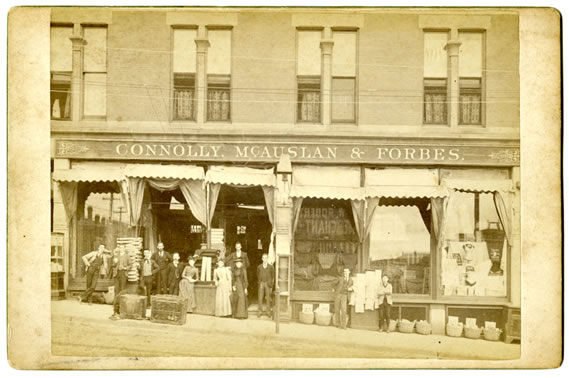
Figure 12: Connolly, McAuslan, & Forbes Dry Goods, Holyoke, ca. 1890
This dry goods store was the workplace of Jacques Ducharme’s father, Henry P. Ducharme for a short period of time before he went into business for himself. Given the timing of this image, it is likely that Henry and Jacques’ aunt, Mederise, are among the people in the portrait.
“He was fourteen when he went to work in Jacques Dulhut's store. At eighteen he had passed through the jobs of delivery boy, office boy, general duty boy, and finally became hosiery clerk. He gloried in his position, for it spelled to him the fact that he was progressing upwards. He had acquired a sense of self-esteem, and almost looked down on those who worked in the mills.”
- Pierre (Henry P. Ducharme) in The Delusson Family[75]
The striking feature of the image of a dry goods store on Dwight Street in Holyoke is the sidewalk’s steep, upward angle (Figure 12). A dozen employees proudly stand on the high side. In the second story windows, vague fragments of lace curtains indicate the class-standing of the rooms. The rooms with the lace are in the Windsor Hotel, Holyoke’s grandest and most expensive lodging. One can presume that Henry P. Ducharme, father of Holyoke novelist, Jacques Ducharme, was among the clerks standing on the street level.[76] The image also has the distinction of capturing a fictional novel’s real-life setting, including two of its characters. The upward-angled sidewalk is an apt metaphor for the social trajectory of some French Canadians as they left factory work for more distinguished careers uphill. The character of Pierre in the novel is based on the writer’s father, Henry, whose father, Etienne came to the city in 1877 to work in the Lyman Mills. Pierre, among all the characters in the novel, yearned to integrate into the life that High Street made possible. Pierre saw in city life “all the dreams he had nourished as a boy, dreams of distance and space, of color and movement”[77] – the features of modernity identified by William Leach in his pathbreaking history of department stores.[78]
The Delusson Family would not find itself among the pantheon of great immigrant novels. Its plot is simplistic and sentimental, the syntax is unadorned and uncomplicated, and it approaches the quotidian life of a single family. But it is precisely for the latter reason that the book merits attention. Despite the hundreds of thousands of French Canadians who came to New England in the late-19th century, very few clues remain as to how they lived their daily lives. Still fewer muse on the implications of abandoning the enclave in place of a home uphill, a process that was happening en masse. Census statistical abstracts demonstrate a large-scale flight of foreign-born residents from the French-Canadian neighborhoods (wards 1-2) between 1910 and 1940. Where did they go? Other than the obvious factor of attrition through immigration restriction, it appears that some went to wards 3, 5, and 7 (Table 1).
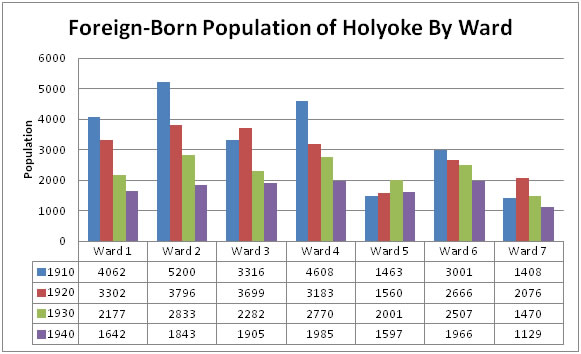
Table 1: Foreign-born Population of Holyoke by Ward
Note the steep drop-off in the populations of Ward 1 and Ward 2. These are the wards dominated by the working-class neighborhoods of Holyoke. Ward 2, the most dramatic drop was the heart of the French-Canadian community.
These are neighborhoods predominantly comprised of single-family homes in the suburban fringe of the city. Ward 3 (Elmwood) offered itself as a middle-class alternative to the high-class ward 7 (The Highlands), but it should be noted that the Highlands saw the greatest jump between 1910 and 1920.[79]
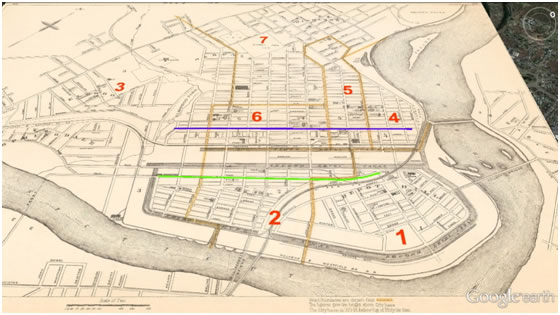
Figure 13: 1908 Ward Map of Holyoke
This is an oblique aerial perspective of Holyoke’s wards in 1908. The westward-facing perspective puts the working-class neighborhoods (wards 1,2, and 4) at the lowest elevation in the foreground and the upper-class Highlands in the background (ward 7). Wards are labeled in red (wards 1 and 2 were French-Canadian neighborhoods). High street (farthest blue line) and Main Street (closest green line) are the two main commercial thoroughfares that will be examined later. Ward boundaries are in orange.
Survivance and the Ethnic Enclave
In some ways, the French-Canadian experience in Holyoke was similar to the Irish immigrants who preceded them. Both groups arrived as a result of deplorable conditions in their homeland. For both groups, the push factors played a greater role than the pull factors – escaping famine was the primary motivation. Upon arrival, both groups gravitated to large cities or industrial company towns. Capitalists took advantage of their plight to achieve impressive feats. In a few years Holyoke’s tired, poor, and huddled Irish built the longest stone dam in the world and dug 2.5 miles of power canals, reportedly by hand. However, there are also key differences between the two groups. The French Canadians arrived almost two decades after the Irish; most came just prior to the acute depressions of 1873 and 1893, when jobs were scarce (Figure 14).
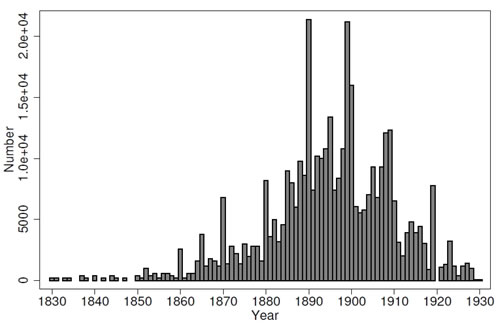
Figure 14: Year of Arrival in New England for French-Canadians, 1830-1930
Note the spikes in immigration for 1870 and 1890 – both periods were followed by some of the most acute depressions in the 19th century – inciting antipathy from working Irish who saw French immigration as a threat to their wage and employment prospects (image from MacKinnon and Parent, 51).
Naturally, the Irish were antipathetic to scores of new immigrants who were willing to accept lower wages at the mills. Furthermore, Québécois households were apt to work in the mills as a family, whereas male Irish heads of household were customarily the only factory worker in a family. Language was also a key difference – very few French-Canadian immigrants came with a command of English. Unlike Boston and other large cities, Catholics in industrial communities were intensely devoted to parochial schools. These institutions helped uphold French-Canadian traditions and language.[80] As Gerard Brault remarked, “The cornerstone on which the Franco-American school was built was the profound conviction that abandoning the French language was tantamount to abandoning the Catholic faith.”[81]
All of the above factors contributed to a Franco-American community that held on to ethnic culture and religious practices much longer than other foreign-born White communities in Holyoke. The French-Canadian enclave was the neighborhood that most effectively resisted the influence of Americanization. Similarily, Rosenzweig called French Catholic organizations in Worcester “bulwarks” of anti-assimilation. Such institutions highlighted the need for survivance, even so far as to render it a “divine mission.”[82] However, records show a gradual disintegration of wards 1 and 2 due to Holyoke’s recession in the 1920s, best illustrated by looking at Holyoke Water Department population trends from 1922-1929 (Figure 15).
When Jacques Ducharme published his novel in 1939 he was aware of the quandary facing Franco-American identity. Cynthia Lees identifies the era of the Second World War to be a critical juncture for survivance – a time when “growing cracks” in the armor of cultural survival appeared in fictional accounts by French-Canadian intelligentsia, including Ducharme (whose novel was among the first to be published in English). MacKinnon and Parent help connect Lees’ conclusions – which drew from fictional Franco-American literature of the era – with census data that demonstrates Franco-American war veterans accelerated the process of assimilation.[83] Taking these conclusions into account, Ducharme’s 1939 novel almost reads like a nostalgic fantasy – a reconstruction of a French-Canadian family that successfully achieves prosperity, yet retains a close connection to Catholicism, family, and Quebec.
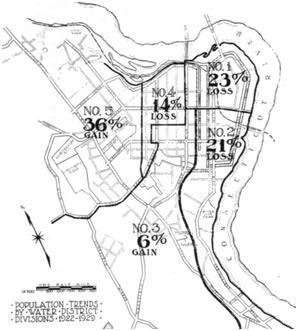
Figure 15: Population Trends by Water District, 1922-1929
In his novel, Ducharme uses historical facts of his own family’s saga (down to accurate descriptions of the actual homes in which they lived). However, a particularly ahistorical moment is when the Delussons buy a farm in Granby while continuing to keep their connection to the Precious Blood parish in Holyoke.[84] In reality, circumstances in the 1920s divided French Canadians between two ways of life – the life they had in Quebec, or the life offered by mass culture; the life of Little Canada, or that offered by High Street. This fact is demonstrated by the list of advertisers in the 1922 commemorative booklet for the Society of Saint Jean-Baptiste’s Grande Fête Jubilaire. The 119 advertisers’ street addresses were transcribed and mapped with locations colorized based on their proximity to each other (Figure 16). The merchants are densest either at intersections of High and Dwight Streets, or Main and Cabot.
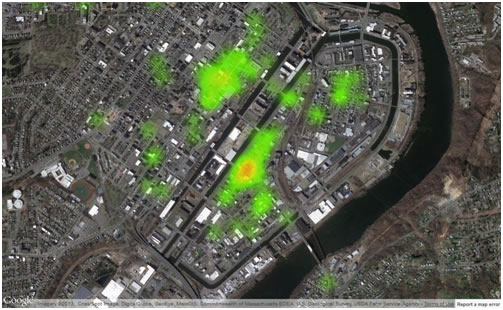
Figure 16: Density Map of Advertisers for the Grande Fête Jubilaire, 1922
A qualitative look at the advertisers reveals an interesting trend; advertisers of English-speaking businesses on High Street tried to entice French-speaking audiences by listing employees who had Francophone last names. These ads emphasized that speaking French was encouraged; A.T. Gallup, a High Street clothier stated, “entrez et parlez francais sans gene” (enter and speak French without embarrassment).[85] On the other hand, advertisers on Main Street appealed to their long-established loyalty to the enclave, best demonstrated by the grocer A.D. Durocher: “M. Durocher est le seul canadien avant à son crédit quarante ans d 'affaire, dans le commerce d'épiceries.” (Mr. Durocher is the only Canadian who has to his credit forty years of business in the grocery store trade).
Though the Immigration Act of 1924 staunched the flow of European and Asian immigrants, it did not restrict intracontinental immigration. Federal laws that followed the onset of the Great Depression finally put a de facto stop to French-Canadian immigration in 1930. By the 1940s Quebec’s economy was booming, while the textile industries in New England continued a long decline. As a result, a number of French-Canadian immigrants returned to Canada. Historians have identified the 1960s and 1970s as a period when often “only middle-aged and elderly” people could be found speaking French in the mill towns of New England.[86] Ducharme grew up witnessing Franco-American flight from wards 1 and 2; the closing of several French-language newspapers (one of which, La Justice, he bought on its last legs); the movement from parochial schools to public English-language high schools; and the decline of Franco-American mutual benefit societies. Above all, the commercial character of the city also changed in fundamental ways. French Canadians responded to these changes in diverse ways, but it became clear that wards 1 and 2 became landscapes dominated by the dead bones of industry fleeing to the South. By the closing of the 1920s, Polish, Greek, Russian, and Italian immigrants became the residents of the decaying tenements in “Frenchville,” as it was once known. Wards 1 and 2 became truly polyglot for the first time. As Anita Healey stated in her oral recollection of 1930s Main Street (which bisected wards 1 and 2): “We had French, German, Italian, Negro. It's all-American – a mixture of everyone.”[87] By the waning years of the Great Depression, Jacques Ducharme was promoting The Delusson Family to the Catholic Book of the Month Club in Springfield while the French-Canadian enclave he depicted was scattering to the suburbs.[88] His novel’s popularity may have had a lot to do with a Franco-American longing for their lost enclaves; in the conclusion, the Delussons live on a farm yet return to their enclave parish for weekly visits – a denouement that may have tugged at nostalgic heart strings. In reality, mass culture was quickly occupying the vacated storefronts on Main Street, and the parish was on its way out. Ducharme’s novel could thus be seen as a call to action against the influence that mass culture had on the Precious Blood parish – the popularity of Ducharme’s novel shows that these anxieties were likely shared by his readers.[89]AlthoughFrench Canadians were adapting to, even adopting, certain aspects of mass consumer life, they were also persisting in ways that may not be apparent in water district population counts, advertisements, or census figures. Ducharme’s novel helps us determine how and why.
From Saint Valérien to Precious Blood
The story of the Delussons begins in the mid-19th century with Jean-Baptise (Etienne Ducharme) and Cecile (Vitaline Cadieux-Ducharme) on a farm in St. Valérien, Quebec.[90] An unexpected visitor arrives, Nicholas Dulhut (Nicholas Proulx), who is recruiting textile workers for the Lyman Mills in Holyoke to come south. Jean is reluctant. Unlike some of his compatriots, Jean’s farm is self-sufficient, and he sees no immediate need to immigrate to Holyoke. He asks Nicholas to return in a few days so he can discuss the matter with his wife, Cecile. Nicholas says that it is a wise decision and promises to return. Without much fanfare, Cecile communicates to Jean-Baptiste that she is pregnant, and the couple decides to wait a few years before moving. Both recognize the imperative of such a move – should their children live in a New England they could “go to school, or they could go into business. There would be work for them, at any rate.”[91] Cecile and Jean-Baptiste recognize the limited prospects of an agricultural life, yet the new life of industrial wage labor appeals to them for the opportunities it provides for their children. Such opportunities included a life of clerical or managerial work made possible by a good education.
Three years pass before Jean decides to travel to Holyoke alone, establish himself, and then send for his family. He arrives in Holyoke after disembarking from the Connecticut River Valley Railroad at Main and Dwight Streets. Nicholas meets Jean at the depot, takes him for a walk down Main Street, and procures a job for him at the Lyman Mills. They continue down Main Street to Nicholas’ apartment, where temporary lodging is provided to Jean and he meets Nicholas’ wife, Madame Dulhut. Soon, Jean receives a pay raise and secures a rental home on Ely Street for the family. His family comes down to join him after selling their farm in Saint Valérien, along with all of their furniture so “they might confidently face the future.” The abandonment of their heirloom furniture represents the Delussons’ earliest step away from their past agrarian life in Quebec. Upon arrival, Cecile joins Madame Dulhut on a shopping trip for new furniture on High Street – her initiation into the rituals of consumer culture in the U.S.[92]
In time, Jean becomes a recognized member of the community and is approached by Franco-American merchants and businessmen about starting a mutual benefit society. A grocery store merchant, Marchessseault (Edouard Cadieux) states to the group: “We cannot fail to make money.”[93] Jean is suspicious of the motives of the men in the room, so he declines to invest significantly or serve on the board. In fact, when the newly formed Society of St. Louis (L'Union Saint Jean-Baptiste d'Amerique) is approached to loan money for the construction of the new Precious Blood church, it offered the loan at a higher interest rate than the local bank. This attracted the ire of the community and resulted in the near-failure of the society.
As Jean-Baptiste advances to foreman at the mill, and his oldest son, Etienne begins work at the mills, Nicholas Dulhut’s son, Jacques, longs to leave the mills for “work that would later carry no stigma.”[94] Jacques borrows money from his father to start a men’s clothing store where “even the Yankees” come to shop.[95] Jacques is actually based on Joseph Prew, Ducharme’s real-life grand-uncle on his mother’s side, who became so wealthy that he was 7th among the highest individual taxpayers in the city.[96] Jacques Dulhut’s rise to merchant prince is a telling moment in the novel; while Jacques becomes prosperous, he also moves out of the Flats to a “luxurious” home on Maple Street. This is the first moment in the novel when a French-Canadian character crosses the High Street line and moves to the hill. Soon afterward, Jean and Cecile decide to move to the hill as well. They find a nice apartment block on Maple Street; the real-life Jean (Ducharme’s grandfather, Etienne) did, in fact, purchase a building on 397 Maple Street – an ornamented, four-story brick apartment building with a crenellated parapet (Figure 17).
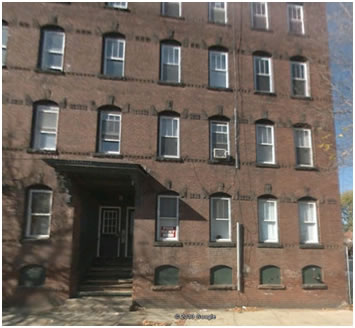
Figure 17: Etienne Ducharme's Apartment Block in Holyoke (image © Google)
Jean and Cecile’s children, Etienne, Pierre (Henry Ducharme), Marie (Mederise Ducharme), Louise (Amanda Bourbeau-Ducharme), Wilfred, and Leopold (Rev. William Ducharme) would finally have rooms of their own, and Cecile sets aside space for a parlor by merging two apartment units into one.[97] Historian Liz Cohen notes that parlors were the “first evidence of the growth of social instinct in any family.” They also served as mediating spaces between outside consumer culture and ethnic or family social life; “parlorization” involved an array of mass-produced consumer objects. The fact that Cecile could finally afford to provide almost every Delusson child with a separate room also adhered to reformist dictums of proper, middle-class domesticity. Still, Cecile “regretted the lack” of a piano in her parlor.[98] The piano was still out of her budget, but her desire for it reflects her nascent yearning for social distinction. Economist Ben Fine identifies the piano as an artifact particularly reflective of what Thorstein Veblen would have called “invidious distinction” (or emulation).[99]
In time, Jean’s children grow up and pursue different careers. Etienne works for the railroad and becomes the pariah of the family, traveling across the U.S. living a rough-and-tumble life wherever the rails take him. Pierre begins work at the mills, but hates it, so he decides to work for Jacques Dulhut at his dry goods store. Leopold, the youngest, wants to become a Catholic priest, so he attends school in Canada and, eventually, Rome. Marie works as a buyer at a department store. And Louise meets a man in Quebec, gets married, and lives a life with him on a farm. Examined as a whole, the Delusson family is divided in the same ways that Main and High, Little Quebec and The Hill were divided. Pierre and Marie are both active participants High Street’s consumer culture. Louise and Leopold became torch bearers of traditionalism. The only character who seems to be ambiguously divided between the two worlds is Etienne, who lives a migratory life typified by the French Canadians, yet he also works in the industry that personifies modernity. Etienne is the moral lesson of the novel: Disassociate from the enclave and become a washed-up outsider. Etienne ends up losing his inheritance and, after Jean’s death, is forced into working in the mills. He eventually redeems himself by living with his mother, Cecile on the farm in Granby.
The Delusson children match the actual lived experiences of Henry P. Ducharme and his siblings. Ernest Guillet interviewed Jacques Ducharme at his home in 1976 and confirmed that “each character represents a real person; situations and places have undergone very minor changes.” For that reason, Guillet called the novel an “in-depth case study of a specific French Canadian family,” a “canvass of Franco-American culture and traditions,” and a realistic portrait of “French-Canadian ethnic values.”[100] Guillet’s appraisal of the novel may be a bit overreaching. Jacques Ducharme was at the high end of the French Canadian socioeconomic pyramid. He grew up on Lexington Avenue, in the very heart of the Highlands, and far away from Little Canada. He socialized with the local cultural elite and was owner of a newspaper with a very specific agenda. As Lees notes, the aims of the French Canadian intelligentsia often had much to do with supporting a unified Francophone identity in order to sell products and services that the elite provided to the working class.[101] Ducharme admitted in his non-fiction book, Shadows of the Trees, that the demands of newspaper advertising overshadowed his editorial work.[102]
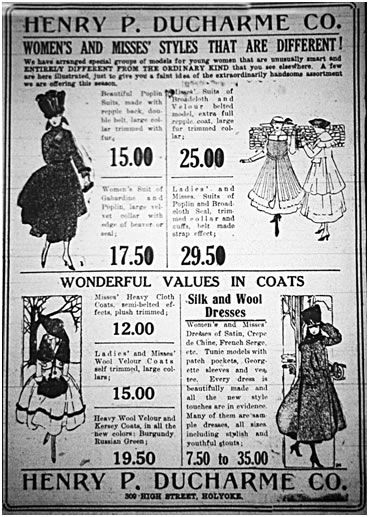
Figure 18: 1916 Advertisement for Henry P. Ducharme
The ad above shows that Jacques Ducharme’s father was not only fully integrated into the ethos of High Street society, but used his ethnic identity as a tool for upward mobility. Frenchnessis no longer a matter of survivance, but instead is used to market a coat. The products worn by women in the foreground take center stage, while symbols of the past and traditional agrarian culture, such as the stone wall and the leafless limbs on trees, appear ominously in the background.
All told, it appears that Ducharme stood between his family’s past and the culture of High Street, with its insurance agencies, banks, publishing firms, and department stores. Ducharme’s bookshighlight an uneasy syncretism of pride in traditional French culture and immersion in the gestalt of modern consumer life. Thus, in The Delusson Family the narrator notes that Jean’s daughter Louise was “raising a family in the old tradition, numerous children and life on a farm,” but in the following clause, he muses: “The spirit of modernity was filtering… into the ranks of the staunchest French Canadians in New England.”[103] Indeed, when he traveled from his home in the Highlands to the La Justice editorial offices on Main Street, he witnessed the distinct ways of life as seen in the daily practices of each street. The generations in his family that preceded him worked in the mills and lived in Little Canada, yet his father had become fully integrated into High Street consumer culture (Figure 18). It appears that Ducharme’s advocacy for survivance was not simply a tool that he used to initiate Franco-Americans into consumer society (though, as a newspaper owner, his livelihood certainly depended on it), but also a way of connecting with his own family’s past.
Participatory Community in Holyoke’s Ward 2
Whatever Ducharme’s motivations, his admonitions had little of the success he imagined. Cultural survival was, above all, put into practice by the working class – and the working class was numerically in full control of its own cultural destiny. As late as 1900 less than 1% of working males in Holyoke held professional jobs, so the French Canadian “99%” maintained Main Street as their hub of cultural activity for over half a century.[104] An anthropologist who wrote on identity in the context of ethnonationalism put it this way: "Ethnic communities are not merely imagined communities; more vitally, they are participatory communities.”[105] While Ducharme imagined a united community mediated by his newspaper, working-class French Canadians in wards 1 and 2 were reinforcing their culture on their own terms. Ducharme may have despaired at the cultural decline of French Canadians, but he failed to notice (or celebrate) the invisible and inconspicuous ways in which French Canadians enacted, performed, and participated in maintaining their culture – a process that continues to this day.[106] Perhaps this explains why Ducharme’s ideological push for survivance did not receive the reception he expected; La Justice was a financial disaster for Ducharme, and he was forced to sell the paper 14 months after purchasing it.[107]
Holyoke author, Emma Dumas could be seen as the participatory counterpart to Ducharme’s imagined ethnonationalism; Dumas peddled her self-published, French-language novel, Mirbah, on Holyoke’s street corners.[108] Her story’s protagonist (whose stage-name is Mirbah) rejects opulence, status seeking, and conspicuous consumption; Mirbah was likely created as a pious alternative to Holyoke’s real-life vaudeville star, Eva Tanguay (who amassed a fortune and lived an extravagant life). Instead, the type of consumption celebrated in Dumas’ novelis theatre – the backbone of the French Canadian ethnic enclave community in Holyoke, where as many as 19 drama clubs performed a distinctly Franco-American repertoire of plays.[109] But theatre was especially vulnerable to the invasion of mass consumer culture. A sobering illustration comes from one of Holoke’s foremost French-American social societies with a theatre troupe, Circle Rochambeau. The society had its headquarters listed in the Bijou Theatre at 318 Main until 1921, when the new address became 312 Main. The Goldstein Brothers, owners of a chain of motion picture theaters, were rapidly growing their enterprise. Likely in response, Circle Rochambeau quietly retreated three doors down. In 1958, Circle Rochambeau, much like the Delussons, packed up and moved to High Street.[110]
A look at the current fate of Franco-American cultural groups attests to their persistence, yet it also demonstrates their eventual atomization. Though groups like Circle Rochambeau still exist today, they are no longer congregated around the core of Cabot and Main in ward 2. Circle Rochambeau now exists far on the suburban fringe of Holyoke at 250 Westfield Road, near Holyoke Community College. La Justice (no longer a newspaper, but now a printing establishment) is on 67 Lincoln street in the Highlands. And Emma Dumas is an enigma; city directories show her at 69 High Street until 1926, where she taught French and continued to sell her only novel at social gatherings. There is no record of her death in Holyoke, so it is presumed that she returned to Quebec.
Yi-Fu Tuan defines topophilia as a special bond between people and the places they occupy; this “sense of place” (to use J.B. Jackson’s phrase) often connects ritual, celebration, and memory to specific spaces in the urban landscape.[111] Lees takes that definition further by viewing topophilia as a clue into the ethnic loyalties of French Canadian immigrants – a theme she analyzes in New England Franco-American literature. Does, then, the flight of French Canadians from Main Street indicate a loss of ethnic loyalty? Certainly not, and J.B. Jackson perhaps provides the most nuanced way of understanding sense of place by contextualizing it in its Greek origins, genius loci. The Greek sense of place,
meant not so much the place itself as the guardian divinity of that place. It was believed that a locality – a space or a structure or a whole community – derived much of its unique quality from the presence or guardianship of a supernatural spirit. The visitor and the inhabitants were always aware of that benign presence and paid reverence to it on many occasions. The phrase thus implied celebration or ritual, and the location itself acquired a special status.[112]
Jackson’s sense of place is thus closely connected to ritual and time. As much as the spaces in The Flats became vacant and lifeless facades by the 1940s, the parish continued to congregate for ritual, redefine the spaces in which they enacted these rituals, and ultimately practiced their identity elsewhere – even in the Highlands. In The Delusson Family, the most persistent symbol is the rosary that Cecile keeps in her hands. Whether the rosary beads appear in ward 2 or at the house on Ely Street, in her parlor up on the Highlands or at her farm in Granby, the beads are a consistent presence in Cecile’s life even after the death of Jean-Baptiste. The rosary beads – despite their migration from working-class life in The Flats, to bourgeois prosperity in the Highlands, and back to agrarian escape in Granby – help inscribe tradition and memory into newly adopted spaces. By making the rosary the central symbol of his novel, Ducharme recognized survivance’s reliance on such inconspicuous talismans of Franco-American identity – ardent ethnonationalist though he was. However, while French Americans redefined their places of meaning, space increasingly played a role in the consumer landscape of Holyoke. Mass media, department stores, and chain retailers increasingly planned, claimed, and quantified their use of space to increase profit, creating what Henri Lefebvre termed representations of space.[113] As Franco-Americans fled what was once a bustling enclave, consumer capitalism followed closely behind – a theme that will be taken up in the following chapter.
| << Previous -- Index -- Next >> | ||||||
| Chapter 1 | Chapter 2 | Chapter 3 | Chapter 4 | Chapter 5 | Chapter 6 | Chapter 7 |
[75] Jacques Ducharme, The Delusson Family: A Novel (Funk & Wagnalls, 1939), 139.
[76] City directories from 1888-1896 list Henry as employed at the establishment, as well as his sister, Mederise. By 1906, he was employed as buyer for the largest department store in Holyoke. Cf. The American Silk Journal. Vol. 25. New York: Clifford & Lawton, 1906; 27.
[77] Ducharme, The Delusson Family, 156.
[78] In 1902, Louis C. Tiffany designed a blue, green, and gold opalescent dome for the department store, Marshall Field, “the largest single piece of iridescent glass mosaic in the world.” As Leach notes, Tiffany “chose his colors carefully, conscious of an artistic tradition that linked them to ‘distance and boundlessness.’” Cf. Leach, William R. Land of Desire: Merchants, Power, and the Rise of a New American Culture. Random House, 1994.
[79] It is important to highlight here that Ward 7 foreign-born residents hailed in large part from Ireland, but Ducharme’s family eventually found a home in Ward 7, indicating that – though uncommon – some French-Canadian immigrants reached the pinnacle of social status by moving to Ward 7. We will examine the Irish Ward 7 experience in Chapter V in the context of Mary Doyle Curran’s novel, The Parish and the Hill. Suffice to say, many French-Canadians who moved to the suburbs either left for Ward 3 or rural towns like Granby or South Hadley. Many others returned to Canada.
[80] Cf. Mary MacKinnon and Daniel Parent, “Resisting the Melting Pot: The Long Term Impact of Maintaining Identity for Franco-Americans in New England,” Explorations in Economic History 49, no. 1 (2012): 51. MacKinnon and Parent reveal some fascinating statistics drawn from census microdata samples between 1900 and 2000. Among the findings, they determined that almost 70% of French-Canadian students in Fall River and Lowell attended parochial schools, while only 20% attended such schools in Boston.
[81] Gerard J. Brault, The French-Canadian Heritage in New England (UPNE, 1986), 73.
[82] Roy Rosenzweig, Eight Hours for What We Will: Workers and Leisure in an Industrial City, 1870-1920 (Cambridge University Press, 1985), 28. Survivance has come to have a number of applicable meanings, but Gerald Vizenor astutely reviews all of them in his book. Here we will use the word in the context of French-Canadian identity and Vizenor’s overarching definition: “Survivance is the action, condition, quality, and sentiments of the verb 'survive', to 'remain alive or in existence,' to outlive, persevere.” Cf. Vizenor, Gerald Robert. Survivance: Narratives of Native Presence. University of Nebraska Press, 2008; 19.
[83] Cynthia C Lees, “Border Spaces and La Survivance: The Evolution of the Franco-American Novel of New England (1875-2004),” 2006, 12; MacKinnon and Parent, “Resisting the Melting Pot.”
[84] Vitaline Ducharme (the factual counterpart to Cecile Delusson) did not retire to a farm in Granby, as the novel portrays. She died in 1929 at 210 Pine Street, a house in the Highlands just a block away from the Wistariahurst Mansion.
[85] Grande fête jubilaire de la Société Saint Jean-Baptiste de Holyoke, Mass. (Holyoke, Mass. : [s.n.], 1922), 60, http://archive.org/details/grandeftejubil00holy.
[86] Damien-Claude Bélanger, “French Canadian Emigration to the United States, 1840-1930,” Marianopolis College, August 23, 2000, http://faculty.marianopolis.edu/c.belanger/quebechistory/readings/leaving.htm; MacKinnon and Parent, “Resisting the Melting Pot.”
[87] Anita Healey, Interview of Anita (Marcotte) Healey by Emelie M. Plourde for Wistariahurst Museum, June 22, 1989, Wistariahurst Museum.
[88] “Catholic Book of the Month Club Selects Holyoker’s First Novel,” Springfield Republican, July 3, 1939.
[89] The Delusson Family received praise from the Catholic Book of the Month Club and quickly sold its first print run of 3,500 within a month. The third edition of the book indicates that it was printed in September of 1939 (only three months after the first edition and two months after the second print run). In 1947, it was translated into Dutch.
[90] The names of the real individuals depicted by the characters in Ducharme’s novel will be in parenthesis.
[91] Ducharme, The Delusson Family, 9.
[92] Ibid., 28, 33.
[93] Ibid., 43.
[94] Ibid., 60.
[95] Ibid., 69.
[96] Twenty Thousand Rich New Englanders: a List of Taxpayers Who Were Assessed in 1888 to Pay a Tax of One Hundred Dollars or More (Luce., 1888), 35–37.
[97] Ducharme, The Delusson Family, 112.
[98] Ibid., 37.
[99] Lizabeth A Cohen, “Embellishing a Life of Labor: An Interpretation of the Material Culture of American Working-Class Homes, 1885-1915,” Journal of American Culture 3, no. 4 (1980): 762–763.
[100] Ernest Bernard Guillet, “French Ethnic Literature and Culture in an American City: Holyoke, Massachusetts,” 1978, 316–317.
[101] Lees, “Border Spaces and La Survivance,” 69.
[102] Jacques Ducharme, The Shadows of the Trees, the Story of French-Canadians in New England, (New York; London: Harper & Bros., 1943), 127.
[103] Ducharme, The Delusson Family, 180.
[104] Guillet, “French Ethnic Literature and Culture in an American City,” 11.
[105] Stanley J Tambiah, “The Nation State in Crisis and the Rise of Ethnonationalism,” in The Politics of Difference: Ethnic Premises in a World of Power, ed. Edwin N Wilmsen and P. A McAllister (Chicago: University of Chicago Press, 1996), 142.
[106] In 1940 Ducharme wrote an editorial in La Justice which reads like an ultimatum. The translated text reads as follows: “Who will be the leader? This is a call. We, the new generation of Franco-Americans, are at the crossroads. Survival or Assimilation? [...] I made my choice. The proof is in the paper... The future is ours. I firmly believe this. I want others to be convinced, come and help me ... come help me in the conquest of this world too foreign to our culture. War rages in Europe. Inspired by this struggle, but on another scope, we should be prepared to defend our own culture.” Cf. Guillet, Ernest Bernard. “French ethnic Literature and Culture in an American City: Holyoke, Massachusetts.,” 1978, 123-124.
[107] Ducharme, The Shadows of the Trees, the Story of French-Canadians in New England,, 127.
[108] Cynthia Lees, “Performances of Franco-American Identity in Mirbah,” Quebec Studies 49 (2010): 154.
[109] Guillet, “French Ethnic Literature and Culture in an American City,” 350.
[110] Holyoke, Massachusetts City Directory (New Haven, Conn.: Price & Lee Company, 1958).
[111] Yi-fu Tuan, Topophilia: A Study of Environmental Perception, Attitudes, and Values (New York: Columbia University Press, 1974), 4.
[112] J.B Jackson, “A Sense of Place, a Sense of Time.,” Design Quarterly 95, no. 164 (1995): 24.
[113] Lefebvre, The Production of Space, 39. Lefebvre distinguished three types of space, which could overlap in an urban community – the perceived, conceived, and lived. Representations of space are defined by Lefebvre as the spaces that are conceived by central planners. Some spaces – monuments for example – could entail all three. Representations of space in the context of consumer culture make use of “abstract space,” a subset of conceived space which is described by Lefebvre as “fantasy images, symbols which appear to arise from ‘something else’… representations derived from the established order: statuses and norms, localized hierarchies and hierarchically arranged places, and roles and values bound to particular places.”